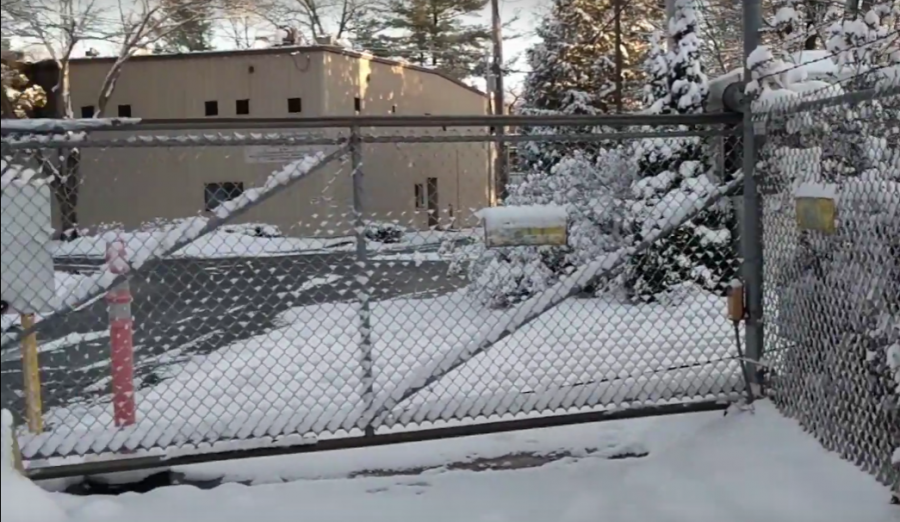WATCH: Chemical Cleanup in Holbrook
The gate leading into the Baird and McGuire site.
February 5, 2020
If you’ve ever read or watched the news, the following paragraph will probably resonate with you. Headlines about pollution from factories or the latest attempt to curb pollution litter the news, and images of drain pipes sputtering out discolored water into a river often compete for screen time with footage of tall chimneys burping out ridiculous amounts of smoke on the weekend news. Between chilling crime reports and stories about the upcoming elections, discussions about pollution are everywhere. But whether you are a Holbrook resident or not, you likely haven’t heard of one of the most toxic and polluted site in Holbrook, or the country for that matter: the Baird and McGuire site.
In 1912, Baird and McGuire Inc. opened a plant in Holbrook as a chemical mixing facility. According to the Patriot Ledger, in the years 1953 and 1954, the town opened two wells to provide drinking water to the town within half a mile of the plant. In 1958, a third well opened just 1,000 feet away.
Within six weeks of the opening of the well, it was found to be contaminated with phenol, a highly toxic and potentially fatal compound. According to Kimberly White, the Environmental Protection Agency’s community involvement coordinator, between 1954 and 1977, the plant was fined at least thirty-five times for violations. The town hired a consultant to investigate the contamination. The results of the investigation pointed the finger directly at Baird and McGuire as a possible source of contamination.
The consultant told the town to reclaim the well and protect the two others from further contamination, however, the town didn’t act on that information. In 1980, the drinking water from the nearby wells was found to be undrinkable due to contaminants. In 1981 and 1982, the Massachusetts Department of Environmental Quality Engineering, later the Massachusetts Department of Environmental Protection, began to crack down on the plant. Finally, in 1982, the town of Holbrook took away the plants permit to operate.
One year later, the EPA added it to the National Priority List, a list of the top hazardous waste sites in the United States eligible for long-term investigation cleanup. At the time, the Baird & McGuire plant was number 14 on the list.
So what has been done to the plant since the government has stepped in? The first investigations towards cleaning up the plant were made in 1983. They reached a plan for how to clean it up in 1986. According to the EPA, there are four stages and an initial response stage that would clean up groundwater, soil, sediments and water supply. To fix the soil, a controversial incinerator was built that burnt 200,000 tons of contaminated soil.
This incinerator was taken down after the contaminated soil had been removed. Today, there is still a groundwater treatment plant at the site that, according to Kimberly White from MASSDEP, is responsible for “monitoring the groundwater at the site, monitoring the sediment and fish in Cochato River, helping EPA implement institutional controls for properties that make up the site and some neighboring locations, conducting studies to update the conceptual site model and improve the existing soil and groundwater clean-up remedy.”
This site is a dark spot in Holbrook’s history that has been on people’s minds lately for two reasons. First, a trash transfer station has been proposed that would go onto parts of the site owned by the town. While the company behind it states there are no health risks, many residents still have fears after what happened with Baird. Second, the EPA completed a five year review of the site in July 29, 2019, and the Community Involvement Coordinator, ZaNetta Purnell, and the Remedial Project Manager, Kimberly White, spoke at a Board Of Health meeting earlier this month which concerned the site and much of the info Holbrook residents would need to know about it. They also took questions. For more information about the chemical plant or the meeting, visit the EPA’s page on the site or the HCAM town government video on demand page.




